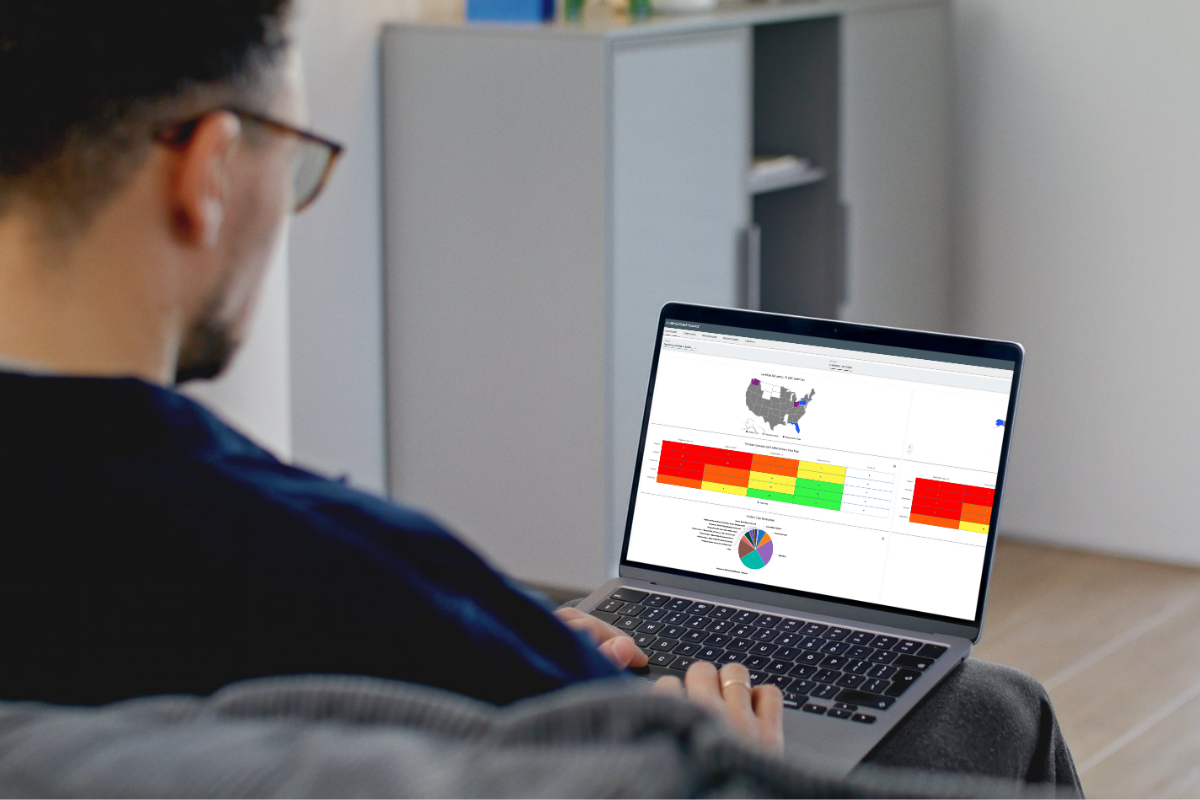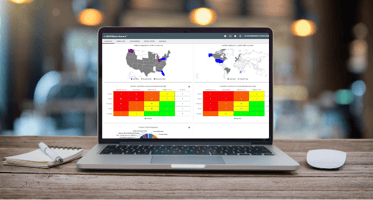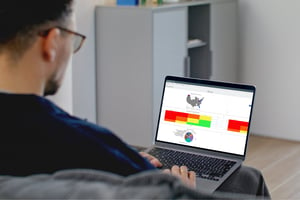The Lost Time Incident Rate (LTIR) provides EHS leaders with a standardized method for tracking the...
The EHS-Dashboard™ Evolution: Ten Years of Growth and Change

Ten years ago, the EHS-Dashboard™ evolution began with a simple but pressing question:
Could we build a better way to manage environmental, health, safety, and sustainability data that scaled across multiple clients, not just within individual organizations?
We began looking for the answer by listening closely to what EHS compliance teams told us they needed. With that information in hand, we refined the product iteratively, building not only faster features, but smarter foundations.
As the product matured, so did our support. More experts joined our team, each contributing ideas, code, and care. Over time, we transitioned from a tool embedded in day-to-day work into a fully independent product and, eventually, a company. Today, the EHS-Dashboard™ is the foundation of Higher Elevation Software. It’s our own company, built around the same values that started this whole journey: Innovation, Integrity and Respect, Charity, Agility, and Fun.
This post is a reflection on those ten years. It's the tale of how an idea became a product, and how a product became a company. The EHS-Dashboard™ evolution story isn’t about explosive growth or perfect plans. It's about building quietly, listening closely, and showing up for our clients and for the work itself.
Built in the Real World
Each of our successes over the past decade has been built on our ability to understand real-world challenges and adapt to evolving requirements. For example, transforming our original, simple regulatory action tracker into a powerful, flexible form builder was one of our earliest wins. From there, we continued by expanding calculated metrics from rigid emissions tracking to a versatile data calculation and aggregation system.
Yet, the EHS-Dashboard™ evolution has been far from flawless. Some features we once believed would be game changers fell short, revealing gaps between our assumptions and how users actually used the system. Occasionally, we developed code that didn’t quite hit the mark, leading to rework and deeper evaluation. These moments became our most valuable lessons, pushing us to better understand user needs and build more robust, practical solutions.
The EHS-Dashboard™ evolution reflects these lessons. Early dashboards and forms were static and purpose-built for specific roles, sites, or use cases. As patterns emerged, it became clear that users wanted more than tailored views. They craved agility. We developed configurable workflows, and that got us thinking about how else we could enhance our users' experiences. We then became committed to ongoing EHS UI enhancement and completely reimagined dashboards as flexible, configurable hubs where users build their own workflows instead of receiving preset ones.
At every turn, our quiet obsession has been to take what works well in one place and embed it everywhere. The result is tools don’t just scale in size, but in real usefulness and broad applicability as well.
A Platform with Purpose
Blending thoughtful product management with hands-on consulting experience has always been a core principle behind the EHS- Dashboard™. We've never aimed to build what one client has asked for. Instead, and from the beginning, we've looked for patterns, common ground, and solutions that could scale across industries and use cases. That mindset has shaped everything we’ve attempted and all that we’ve accomplished.
We’ve stayed close to our users, and that’s shaped not only what we develop, but how we develop it. Our approach has always been iterative, listening first, and grounded in reality. From performance tuning to adding new logic layers and introducing modular dashboards, every enhancement has been grounded in dialogue and built to address a real need.
Over the years, we’ve seen the platform grow into more than just a tool set. The EHS-Dashboard™ has evolved into a daily part of how people manage compliance, stay ahead of reporting deadlines, and bring clarity to increasingly complex requirements. We know that, if we do our jobs well, the software fades into the background and helps teams focus on the work that matters.
Ten Quiet Lessons in Ten Years of the EHS-Dashboard™ Evolution
Over the years, we’ve learned that building a product that truly serves users requires patience, focus, and a willingness to listen and adapt. These ten lessons reflect the quiet but steady principles that have guided us and helped us shape a tool that scales thoughtfully, solves real problems, and earns lasting trust.
- Start small but build with scale in mind. Begin with manageable steps to ensure that our solution grows smoothly without costly rework as demands increase.
- Don’t chase trends. Solve problems. Hyperfocus on addressing real user needs rather than following every new technology fad.
- Features are easy. Foundations are hard. Prioritize building strong, reliable systems that support long-term success over flashy features.
- The best roadmap can sometimes be found in the support ticket queue. User feedback and support requests often reveal the most important product priorities.
- Build for clarity, not control. Design tools that empower users with transparency and flexibility rather than strict restrictions.
- You’ll never regret spending more time on good data design. Investing in clean, consistent data ensures trustworthy insights and smoother reporting.
- It’s okay to change your mind. Just do it with intention. Adapt thoughtfully to changing needs while maintaining clear purpose and focus.
- What helps one user today should help ten tomorrow. Create improvements that scale and benefit the broader user community.
- Every new feature adds weight. Make it worth it. Weigh the complexity new features bring. Only add those that offer meaningful value.
- Trust is built when things just work. Reliability and smooth performance foster lasting user confidence and trust.
Looking Forward
The next phase of the EHS-Dashboard™ evolution will build on what we’ve already accomplished, with AI development for EHS software at its core. This isn’t just another feature or complexity layer; it’s a new perspective shaping how we build, how we think, and how we empower our users.
We’ve begun integrating AI across our development process from feature planning to testing automation and internal tooling, but that’s just the beginning. Intelligent, agentic components embedded within the EHS-DashboardTM are coming next. These systems will surface insights, provide predictive analytics, automate repetitive tasks, and support real-time decision-making. They'll do more than provide convenience. These agents will create a smarter, more proactive user experience.
Our goal is a system that doesn’t merely react to data but proactively guides the work itself. It’s a step toward a more intelligent, supportive platform. Of course, and as always, we’re committed to doing this thoughtfully. We’re listening closely, learning continuously, and delivering with care.
A Thank You
Thank you to everyone who has used the EHS-DashboardTM, shared feedback, challenged our assumptions, or stuck with us through iterations and updates. You’ve been essential to this journey, helping shape the product and push us forward. We’re truly grateful for the trust you’ve placed in us and for the opportunity to build this platform together.
Here’s to the next ten years.
— The EHS-DashboardTM Team
-1-1.png?width=50&name=Higher_Elevation_Software_copy-removebg-preview(1)-1-1.png)


